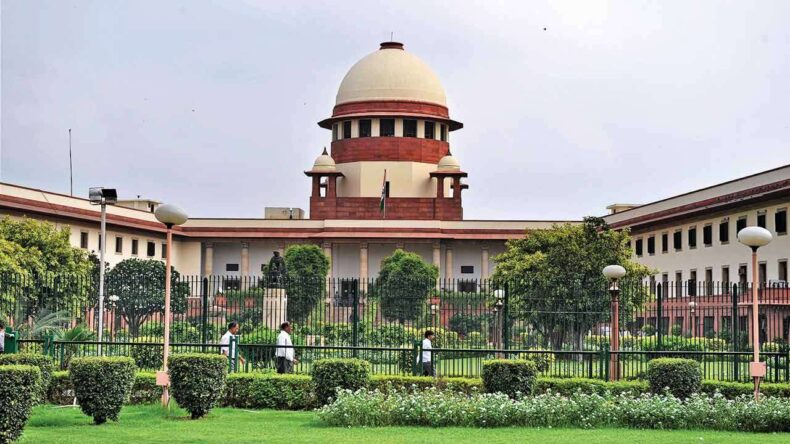Table of Contents
Supreme Court says that…..
In a recent case called Guno Mahto v. State of Jharkhand, the Supreme Court cleared a man convicted of killing his wife over 22 years prior, ruling that the courts had only relied on a mere suspicion to condemn him.
Justices BR Gavai and Sanjay Karol, sitting on a divisional bench, believed that the only reason the appellant was convicted by the lower courts was that he was last seen with his deceased wife. There is no proof, much less proof that the circumstances connecting the appellant to the offense are beyond reasonable doubt and suspicion.

Supreme Court’s decision……
The decision, in this case, demonstrates the importance of having sufficient evidence to prove guilt beyond a reasonable suspicion. Despite the suspicion, it was deemed a flimsy component of the prosecution’s narrative without additional circumstantial or ocular evidence. As stated in the decision, there was no proof beyond a reasonable doubt that the accused committed the offense sought to be established. Prosecutors and legal teams must ensure they have all the necessary evidence before proceeding with a case.
The Court asserted that this would clarify how the lower courts gravely erred in issuing a conviction decision based on suspicion and inadequate evaluation of the facts. The Court was considering an appeal that contested a 2004 decision by the Jharkhand High Court that upheld the accused-conviction appellant and life sentence.
In August 1988, the murder of the appellant’s wife was discovered. At the village’s well, her body was discovered. According to the prosecution, the accused killed his wife and then placed her corpse in the village well intending to cause the evidence to vanish. The accused allegedly afterward contacted the police with dirty hands by inventing a lie about his wife going missing.
Supreme Courts Witness….
The prosecution cross-examined up to 10 witnesses during the trial. The investigating officer, however, was not questioned. The trial court sentenced the appellant to two years of solitary confinement for the offense under Section 201 of the Indian Penal Code 1860 (IPC) and life in jail under Section 302 of the IPC (causing disappearance of evidence of offense). The High Court upheld the trial court’s verdict and punishment on appeal. The High Court had only relied on the eyewitness testimony of three witnesses. The appellant moved to the supreme court as a result of this.
Given that the whole case was supported by circumstantial evidence, the court cited its ruling in Sharad Birdhichand Sarda v. State of Maharashtra (1984), which outlined crucial requirements that must be met before an accused person may be found guilty based only on circumstantial evidence. The Investigation Officer was not questioned, the Court remarked. Moreover, there is no visual or written proof that the appellant was responsible for losing evidence by providing the police with the data.
The Court observed that none of the witnesses had made any accusations against the appellant in connection with the crime after reviewing the testimony of the prosecution witnesses based on which the appellant was found guilty. The Court moreover observed that the appellant had never been the subject of a case of maltreatment of the dead. The Court concluded that the prosecution’s case is therefore unfounded because there is no evidence connecting the accused to the crime.

Supreme Court’s process..
The Courts below proceeded with the acquired assumption of the accused’s guilt because he was last seen with the deceased and filed a false report, forgetting that according to the deceased’s father’s version, the accused’s father had personally informed him of his daughter’s disappearance at least two days before the incident. Suspicion and doubt cannot be the grounds for an accuser’s guilt. The evidence implicating the accused in the crime has not been established in any way, much less beyond a reasonable doubt.
The Court concluded that the lower courts committed grave errors by condemning the appellant based on suspicion and inadequate evaluation of the evidence, significantly harming him and producing a farce of justice. The trial court’s and the High Court’s conviction rulings were thus annulled by the Court when it granted the appeal.












